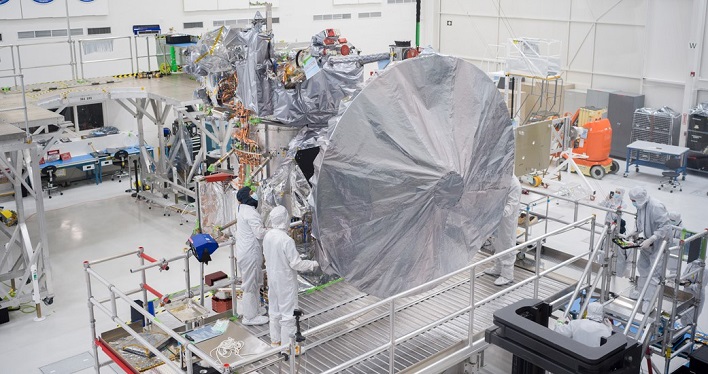NASA's Europa Probe Just Got A Massive Upgrade To Explore One of Jupiter's Icy Moons

The Europa Clipper is designed to travel into deep space in search of conditions suitable for life on Jupiter. In order to communicate what it finds back to Earth, the spacecraft needs to be able to make extraordinarily long-distance calls. Therefore, it has been outfitted with a 10-foot wide high-gain antenna that will use the space agency's Deep Space Network to send data back to ground control.
The Deep Space Network (DSN) is NASA's international array of giant radio antennas that supports interplanetary spacecraft missions, along with a few that orbit Earth. It is comprised of three facilities that are spaced equidistant from one another, approximately 120 degrees apart in longitude, around the world, according to NASA. The sites are located at Goldstone, near Barstow, California, near Madrid, Spain, and near Canberra, Australia.
The DSN will be vital to the Europa Clipper as it takes a close look at the "ice-cloaked" moon that it's named after. NASA wants to take a deep dive into Europa, one of Jupiter's moons that is located about 444 million miles from Earth, and learn more about its subsurface ocean. The space agency believes it may contain a habitable environment.
"The high-gain antenna is a critical piece in the building or Europa Clipper," explained Jordan Evans, the Clipper project manager at JPL. "It represents a very visible piece of hardware that provides the capability that the spacecraft needs to send the science data back from Europa. Not only does it look like a spacecraft now that it has the big antenna, but it's ready for its upcoming critical tests as we progress towards launch."
As of now, the spacecraft has successfully completed all of its standalone testing, according to Matthew Bray, the designer and lead engineer for the high-gain antenna. He added that as the spacecraft goes on to complete its final testing, radio signals will be "looped back through the antenna via a special cap, verifying that the telecom signal paths are functional."
Once the final testing on the high-gain antenna completes its final testing, the Europa Clipper will still need to undergo a few more steps and testing before its launch next year. Simmie Berman, the radio frequency module manager at APL, remarked, "Little kids know where Jupiter is. They know what Europa looks like. It's super cool to get to work on something that has the potential for such a big impact, in terms of knowledge, for humanity."

